Dear Valued Shareholders, Partners and Friends. Electric Royalties Ltd. (TSXV:ELEC)(OTCQB:ELECF) ("Electric Royalties" or the "Company") was founded on a simple yet powerful premise: to build a portfolio of royalties on critical metals that are essential to the clean energy transition. In the past five years, we have outperformed our original growth expectations by expanding our portfolio from 11 royalties to 43, and acquired 17 lithium properties that are optioned out with potential to become future cash-flowing royalties.
And yet, despite this ~290% increase in our portfolio size, our stock trades well below its value when we went public. Let me be clear-the value of the Electric Royalties portfolio is not reflected in our market capitalization. The market does not yet recognize this valuation gap.
A Portfolio Packed with Value
Our asset base is diversified across metals critical to the clean energy revolution. To underscore the potential intrinsic value of our portfolio, I would like to recap some of our cornerstone royalties and the progress they have enjoyed since we acquired them.
We acquired a cash flowing 0.75% Gross Revenue Royalty on the producing Punitaqui copper-gold mine in Chile in December 2024. The operator is currently focused on ramping up production to achieve 19 to 23 million pounds of copper annually, and near-mine exploration to extend mine life beyond the current seven years1.
The Battery Hill Manganese Project has seen excellent progress since we acquired our royalty in June 2020. Battery Hill is one of the largest carbonate manganese deposits in North America and has the potential to be a substantial contributor to the supply chain of high-purity manganese for the EV industry2. The project has moved smartly through establishing mineral resources, completing a Preliminary Economic Assessment( PEA) and now has a Pre-Feasibility Study (PFS) underway.
The PEA showcases a base case 47-year mine life with average annual revenues of approximately US$177 million3. Once Battery Hill is in production, Electric Royalties is entitled to 2% of annual revenues from the project arising from our 2% Gross Metal Royalty. We are not the only ones recognizing the potential at Battery Hill, as mining luminary Eric Sprott recently threw his support behind the project, providing funding to the operator, Manganese X, to produce the PFS (which is expected to be completed this year).
The PEA is preliminary in nature; it includes Inferred Mineral Resources that are considered too speculative geologically to have the economic considerations applied to them that would enable them to be categorized as Mineral Reserves, and there is no certainty that the projections in the PEA will be realized.
The Mont Sorcier Iron-Vanadium deposit is a very exciting development project in Canada. This project has attractive economics, in part due to the vanadium content on which Electric Royalties holds a 1% Gross Metal Royalty. Not only has considerable progress been made on the technical front with a funded Feasibility Study underway, but corporately a partnership has been established with Glencore, and there are clear indications of project financing for US$420 million from a UK export-import bank.
The PEA has a mine life of 21 years, a planned annual production rate of five million tonnes, and a US$15 per tonne vanadium credit4.
The PEA is preliminary in nature and includes Mineral Resources that are not Mineral Reserves and do not have demonstrated economic viability. There is no certainty that the projections in the PEA will be realized.
The Bissett Creek Graphite Project, located in Northern Ontario, Canada, is operated by Northern Graphite, one of the very few graphite producers outside of China. Our 1.5% Gross Revenue Royalty was the first royalty financing on an advanced graphite project. Northern Graphite has stated its goal to make Bissett Creek its flagship asset. The PEA calls for production of 33,183 tonnes per year5, and management has recently stated that they aim to ultimately produce up to 100,000 tonnes per year from Bissett Creek6 as part of their battery manufacturing JV intended to be set up in Ontario.
We acquired the 1.5% Net Smelter Royalty on Seymour Lake, located in Northern Ontario, Canada, for consideration of approximately C$1 million, which was paid in Electric Royalties shares in 2021. Since that time, the current operator has raised C$70 million for development activities, an updated mineral resource estimate and the completion of a PEA and is now preparing a Feasibility Study. The project has also benefited from strong federal government support, having received a C$100 million Letter of Intent for project financing with the intent of progressing the project towards becoming the first lithium mine to enter production in Ontario. Due to technical disclosure rules, I'm not able to comment on the project's planned production profile as the operator, Green Technology Metals, is listed on the ASX; however, I encourage people to visit their corporate website for more information.
Zonia is a copper oxide development project located in Arizona - a jurisdiction ranked by the Fraser Institute as seventh best of 86 mining jurisdictions assessed for Investment Attractiveness in 2023. Since we acquired our 0.5% Gross Revenue Royalty in March 2022, a resource update was completed resulting in the resource doubling from around 500 million pounds to close to 1 billion pounds of contained copper in the ground7. As a result, we expect that the upcoming Feasibility Study will have a larger production profile than the PEA. Due to technical disclosure rules, I am no longer able to publicly reference the PEA as it has been superseded by the technical report on the updated mineral resource estimate; however, a feasibility study is currently underway and due out in the near future. In the past few weeks, World Copper received a Letter of Intent for the acquisition of Zonia from World Copper with the intent of fast tracking the project to production.
The Middle Tennessee Zinc Mine (MTM) has been a swing producer of zinc for over 50 years and produced around 2 billion pounds of the metal during that time. Germanium and gallium are both important by-products at MTM and both have become of increasing strategic importance since China's ban on their export in 2024. Due to this renewed importance, and the recent uptick in zinc prices, we believe there is urgent incentive to get the currently idled mine back into production in the USA.
We acquired our 2.5% Net Smelter Royalty on the Graphmada Graphite Mine in Madagascar for shares in 2021. Although this isn't a significant long-term value driver for Electric Royalties due to a cumulative cap on revenues of A$5 million and an expiry date of January 1, 2029, it could have a large impact on immediate cash flows once the operator secures a partner to finance a return to production. Graphmada was previously in production for 18 months and consistently obtained product qualification with offtakers but was shut down due to Covid restrictions in the country. Management of the project is seeking project financing to re-start the mine.
We acquired our 1.5% Gross Revenue Royalty on the Penouta Tin Mine in Spain in 2023. After several quarters of cash flow to Electric Royalties, we were disappointed to learn of the Spanish court's revocation of Strategic Minerals' permit at the end of 2023. This came at a time when Penouta, Europe's only producing tin mine, was steadily ramping up production in an environment of steadily increasing tin prices. The idling of mine operations triggered a voluntary restructuring in November 2024. Management is working towards a positive resolution to the financial restructuring and permitting in the near future. With the recent stoppage of production at Alphamin's operations in the DRC due to regional conflict, tin prices have significantly increased8 and it would be welcome news indeed to have a successful permitting resolution at Penouta.
Sayona Mining raised over A$400 million to develop the North American Lithium Hub (NAL) in Northern Quebec, Canada. NAL is an integrated operation and went into production in March 2023. This is tremendous news for our 0.5% Gross Metal Royalty on part of the Authier lithium deposit, which we acquired in June 2020, in that Authier is a key part of that operation. In the NAL Feasibility Study, it is stated that Authier is planned to supply 1/3 of the feed to the NAL plant. The Authier royalty is the only royalty in our portfolio that doesn't cover the entire property, so exact royalty revenues annually are more difficult to estimate.
Some honorable mentions from the remaining 33 royalties and other assets in the portfolio:
- Kenbridge- 0.5% Gross Revenue Royalty - acquired in 2023. NI 43-101 Preliminary Economic Analysis completed.
- Ontario Lithium Royalty Portfolio - acquired in 2024. 19 royalties in and around all the most advanced lithium projects in Ontario including Georgia Lake, Pak/Spark, and Seymour Lake/Root Lake.
- Ontario Lithium Property Option Portfolio - acquired in 2024. The portfolio received payments totalling approximately C$750,000 in 2024 and we expect similar payment amounts from the currently optioned 17 properties surrounding the most prospective lithium projects in Ontario.
- Sleitat - 1% Net Smelter Royalty - acquired in 2022. One of two potentially economic tin deposits in the entire United States, according to the USGS9.
- Cancet - 1% Net Smelter Royalty - acquired in 2021. Over A$50 million raised for exploration of Cancet and regional projects by operator Winsome Resources since our royalty acquisition.
- Millennium - 0.5% Gross Revenue Royalty - acquired in 2021. Currently being advanced by JV partners Global Energy Metals and Metals Bank.
- Rana - 1% Net Smelter Royalty - acquired in 2021. Well-funded through operator's JV partner Kingrose Mining, a participant of BHP's Xplor program.
- Graphite Bull - 0.75% Gross Revenue Royalty - acquired in 2021. Pre-feasibility currently underway.
Many of these projects are advancing towards production, with 4 royalties with potential to re-enter or enter production over the next twelve months, and feasibility studies expected on another 5 royalties over the same time period. Over C$700 million has been raised by operators to advance the projects in our royalty portfolio, and all of that positive development costs Electric Royalties nothing, nor will the remaining paths to cash flow on each of our 43 royalties.
Assets Across Secure Jurisdictions
We have carefully built a portfolio of royalties on assets in North America, Europe, and Australia-regions known for their stability, infrastructure, and commitment to responsible resource development. As global markets increasingly prioritize security of supply, particularly for critical minerals, we believe our focus on these stable, mining-friendly jurisdictions positions us ahead of the curve. Our royalties are on rapidly developing assets, with the potential to ensure long-term value for our shareholders.
The Benefits of a Royalty Model vs. Traditional Mining Companies
Unlike traditional mining companies, Electric Royalties carries minimal operational risk. We don't bear the cost of mine construction, permitting, or operational challenges. Our business model allows us to benefit from rising commodity prices, increased production, and mine expansions-all without the need for additional capital outlay from us. This low-risk, high-upside structure makes royalty companies one of the most resilient business models in the resource sector.
A Discussion of Our Valuation
The disconnect between our share price and our view of potential true value is stark. While the market may not yet appreciate what we have built, insiders certainly do. I, along with my extended family, own approximately 18% of the company. Stefan Gleason, a noteworthy investor and business owner in the resource sector, owns approximately 28%, while Globex Mining owns approximately 11%. The majority of the remaining shares are largely held by high-net-worth individuals who recognize the long-term potential of our portfolio. This concentrated, committed shareholder base speaks volumes about the belief in Electric Royalties' future success. However, management believes that the following factors are affecting current share valuation:
- Acquisition Share Payments - Electric Royalties has only raised around C$13 million in equity since its inception over five years ago. This means that in order to grow the portfolio to the current total of 43 royalties, while also funding five years of G&A and going public costs, we've at times used our shares in order to acquire certain royalty assets. We issued over C$12.5 million in shares for acquisitions, and as far as we know, almost all of those shares have since been liquidated in the open market when royalty vendors needed funds to advance their projects - and this has impacted our share price.
- Lack of Marketing Expenditures during 2023 and 2024 - We reduced marketing spend in 2023 and 2024 so that we were able to prioritize the acquisition of producing and near-producing royalties. Going forward, we plan to expend more time and effort telling our story to broader markets.
- Lithium Prices - Electric Royalties' portfolio has a high percentage of lithium royalties, and since rising by almost 19x in 2022, lithium prices have declined significantly, potentially impacting our share price.
- Convertible DebtFacility Prevented Dilution - Our C$10 million convertible debt facility is a one-of-a-kind, company-friendly acquisition facility that we used to grow our portfolio through several acquisitions over the past two years without dilution other than interest payments:
- The lender is our largest shareholder, Stefan Gleason, who owns approximately 28% of the Company.
- It is convertible into shares in the C$0.50 to C$0.70 range, significantly above our current share price.
- We don't owe a cash payment of any kind until maturity in January 2028 and all of the interest accrued to date was recently converted into shares of Electric Royalties.
- There is no early repayment fee so at any point over the next three years, whether through refinancing a larger facility for more acquisitions, raising equity at a higher valuation over the next three years to repay it or repaying it from cash flow, there is no extra cost to repaying the loan early.
- Penouta and MTM being put on care and maintenance in 2023 - Both our producing royalties Penouta and Middle Tennessee Zinc unexpectedly halted operations at the end of 2023 for completely different reasons, which has impacted our revenues and the share price. We expect MTM to come back into production in the near term and will update the market as soon as we receive news on Penouta.
- US Brokerage Rules - Arbitrary new rules imposed by brokerage firms have recently made securing private placement investments from US investors much more difficult. More specifically, brokerages in the US will no longer allow the deposit of shares held in certificate form when such shares are trading below US$0.50 - making new investments in our stock via private placement almost completely illiquid for US investors.
These liquidated shares have mostly been acquired by my extended family or Mr. Gleason via open market purchases. Hence Mr. Gleason, my family, and Globex Mining now own roughly 57% of the stock outstanding. We are pleased that the stock consolidation has resulted in supportive, long-term shareholders. Additionally, about 80% of our recent financing was filled by management's president's list - another vote of confidence by people closely following our story.
While we have what we believe to be a well positioned lithium royalty portfolio, we are quite diversified across the other eight clean energy metals and are planning to pursue more copper, tin, and zinc acquisitions in 2025 with a particular focus on copper assets. And while lithium prices are down, they are still double what they were when we made our first investments into our most advanced lithium assets, and copper and tin prices are currently performing well.
Roadmap for 2025: Growth, M&A, and a Transformative Transaction
We have a clear roadmap for the year ahead. Our 2025 plans include pursuing:
- Strategic funding partnerships to support ongoing expansion and ensure financial flexibility;
- Corporate M&A initiatives to further strengthen and diversify our royalty portfolio; and
- A transformative transaction that could significantly enhance our scale, market position, and visibility.
We are not sitting idle waiting for recognition. We continue to add value through acquisitions and strategic partnerships, ensuring we hold a dominant position in the clean energy metals space. We remain steadfast in our mission, and we believe that over time, fundamentals will win out.
Immediate Revenue Growth Potential
With the most recent acquisition of a new gross revenue royalty on the producing Punitaqui copper-gold mine in Chile, along with option payment revenues from our optioned lithium properties in Ontario, and advanced royalty payments on Bissett Creek, Electric Royalties has four royalties with the potential to either recommence production or enter production for the first time in 2025 including:
- Middle Tennessee Zinc (care and maintenance since 2023; zinc prices up significantly since then);
- Graphmada (under care and maintenance since 2020, with a search underway for a JV partner to recommence production);
- Penouta (under care and maintenance since 2023; permitting and financial restructuring ongoing as tin prices are up 50% since production halt); and
- Authier (NAL hub entered production in 2024; Authier makes up 30% of the ore in the feasibility plan).
Development Growth Catalysts
A large portion of the value in our portfolio is derived from our near-term development royalty assets. There are exciting developments underway on assets the company acquired two to four years ago that have made significant strides towards being construction ready and ultimately closer to production. This year we are expecting major milestones for:
- Seymour Lake (feasibility study underway)
- Mont Sorcier (feasibility study underway)
- Zonia (feasibility study underway)
- Battery Hill (pre-feasibility study underway)
- Graphite Bull (pre-feasibility study underway)
There are sure to be additional developments across the rest of the portfolio and management intends to find accretive transactions that will enhance the Company's value. The portfolio itself has many positive catalysts coming this year and is strategically positioned in clean energy metals projects that can become domestic sources of supply for North America, Europe and Australia.
Final Thoughts
I'd like to thank the board and team of Electric Royalties for your steadfast support while we navigated our wins and challenges during the past five years. As a CEO who founded the company and is personally invested, it pains me to see our valuation where it is today. We are committed to changing that this year by working hard to unlock the value in our portfolio.
To the shareholders who have been on this journey with us and recognize our value proposition, we thank you for your confidence. We believe our shareholders will ultimately be rewarded as our plans for 2025 and beyond come to fruition and market recognition increases.
Thank you for all your support.
Sincerely,
Brendan Yurik
Founder & CEO
Electric Royalties Ltd.
- Battery Mineral Resources Corp. news release dated May 13, 2024
- Manganese X Energy website https://www.manganesexenergycorp.com/lets-talk-canadas-critical-minerals-list-and-methodology/
- Battery Hill: Technical report titled "NI 43-101 Technical Report on the Preliminary Economic Assessment of the Battery Hill Manganese Project, Woodstock, New Brunswick, Canada" with an effective date of May 12, 2022, available under Manganese X Energy Corp.'s profile on sedarplus.ca
- "NI 43-101 Technical Report - Preliminary Economic Assessment (PEA) of the Mont Sorcier Project, Province of Quebec, Canada with effective date of September 8, 2022
- Bissett Creek: Northern Graphite Corporation Bissett Creek Project PEA; Leduc, M; Effective Date December 6, 2013; Further information and technical reports can be obtained through the Northern Graphite profile at www.sedar.com or northerngraphite.com.
- Northern Graphite news release dated November 9, 2022
- World Copper Ltd. news release dated September 9, 2024. The NI 43-101 technical report filed on sedarplus.ca is titled "Resource Estimate for The Zonia Project 2024 Update" with effective date August 27, 2024, amended November 8, 2024. The updated estimate includes 112.2 million short tons grading 0.297% total-copper in the Indicated category (668 million pounds of copper) and 62.9 million short tons grading 0.255% total-copper in the Inferred category (320 million pounds of copper) at a cut-off grade of 0.18%; recoveries of 75% in oxides and 70% in the transitional zone.
- https://www.mining.com/web/tin-price-jumps-after-alphamin-temporarily-ceases-operations-at-bisie-mine-in-congo/
- Kamilli, R.J. et al; Chapter S of Critical Mineral Resources of the United States-Economic and Environmental Geology and Prospects for Future Supply; USGS Professional Paper 1802-S; 2017
David Gaunt, P.Geo., a qualified person who is not independent of Electric Royalties, has reviewed and approved the technical information in this release.
About Electric Royalties Ltd.
Electric Royalties is a royalty company established to take advantage of the demand for a wide range of commodities (lithium, vanadium, manganese, tin, graphite, cobalt, nickel, zinc and copper) that will benefit from the drive toward electrification of a variety of consumer products: cars, rechargeable batteries, large scale energy storage, renewable energy generation and other applications.
Electric vehicle sales, battery production capacity and renewable energy generation are slated to increase significantly over the next several years and with it, the demand for these targeted commodities. This creates a unique opportunity to invest in and acquire royalties over the mines and projects that will supply the materials needed to fuel the electric revolution.
Electric Royalties has a growing portfolio of 43 royalties in lithium, vanadium, manganese, tin, graphite, cobalt, nickel, zinc and copper across the world. The Company is focused predominantly on acquiring royalties on advanced stage and operating projects to build a diversified portfolio located in jurisdictions with low geopolitical risk, which offers investors exposure to the clean energy transition via the underlying commodities required to rebuild the global infrastructure over the next several decades toward a decarbonized global economy.
For further information, please contact:
Brendan Yurik
CEO, Electric Royalties Ltd.
Phone: (604) 364‐3540
Email: Brendan.yurik@electricroyalties.com
https://www.electricroyalties.com/
Neither the TSX Venture Exchange nor its Regulation Services Provider (as that term is defined in the policies of the TSX Venture Exchange), nor any other regulatory body or securities exchange platform, accepts responsibility for the adequacy or accuracy of this release.
Cautionary Statements Regarding Forward-Looking Information and Other Company Information
This letter includes forward-looking information and forward-looking statements (collectively, "forward-looking information") with respect to the Company within the meaning of Canadian securities laws. This letter includes information regarding other companies and projects owned by such other companies in which the Company holds a royalty interest, based on previously disclosed public information disclosed by those companies and the Company is not responsible for the accuracy of that information, and that all information provided herein is subject to this Cautionary Statement Regarding Forward-Looking Information and Other Company Information.Forward-looking information is typically identified by words such as: believe, expect, anticipate, intend, estimate, postulate and similar expressions, or are those, which, by their nature, refer to future events. This information represents predictions and actual events or results may differ materially. Forward-looking information may relate to the Company's future outlook and anticipated events and may include statements regarding the financial results, future financial position, expected growth of cash flows, business strategy, budgets, projected costs, projected capital expenditures, taxes, plans, objectives, industry trends and growth opportunities of the Company and the projects in which it holds royalty interests.
While management considers these assumptions to be reasonable, based on information available, they may prove to be incorrect. Forward-looking statements involve known and unknown risks, uncertainties and other factors which may cause the actual results, performance or achievements of the Company or these projects to be materially different from any future results, performance or achievements expressed or implied by the forward-looking statements. These risks, uncertainties and other factors include, but are not limited to risks associated with general economic conditions; adverse industry events; marketing costs; loss of markets; future legislative and regulatory developments involving the renewable energy industry; inability to access sufficient capital from internal and external sources, and/or inability to access sufficient capital on favourable terms; the mining industry generally, recent market volatility, income tax and regulatory matters; the ability of the Company or the owners of these projects to implement their business strategies including expansion plans; competition; currency and interest rate fluctuations, and the other risks.
The reader is referred to the Company's most recent filings on SEDAR+ as well as other information filed with the OTC Markets for a more complete discussion of all applicable risk factors and their potential effects, copies of which may be accessed through the Company's profile page at sedarplus.ca and at otcmarkets.com.
Click here to connect with Electric Royalties (TSXV:ELEC) to receive an Investor Presentation
Source

![]() View original content to download multimedia: https://www.newswire.ca/en/releases/archive/May2021/26/c0867.html
View original content to download multimedia: https://www.newswire.ca/en/releases/archive/May2021/26/c0867.html 

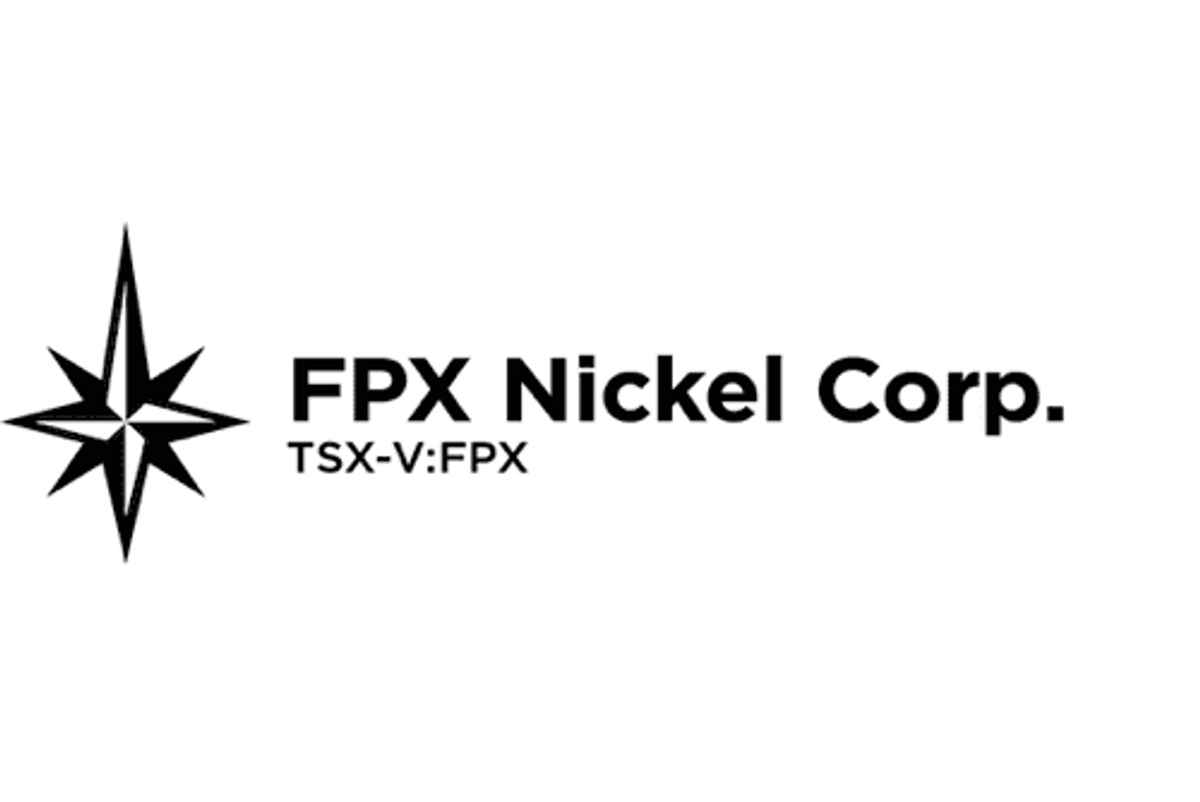
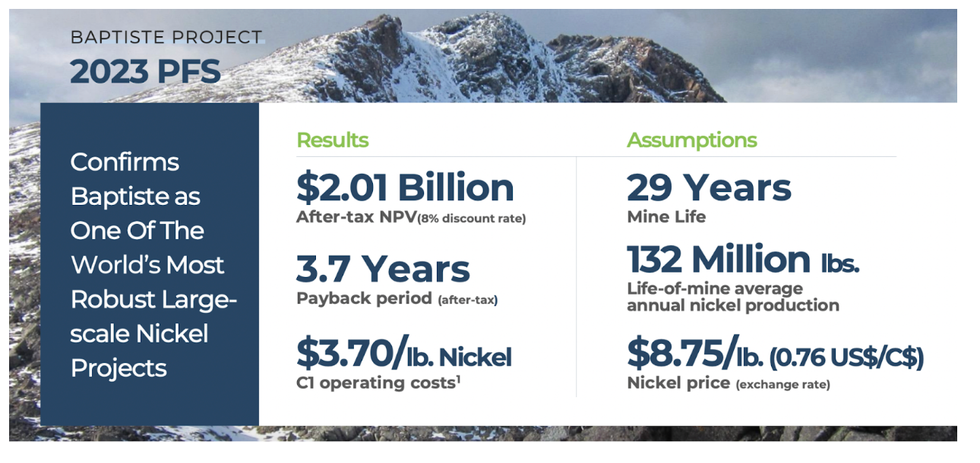
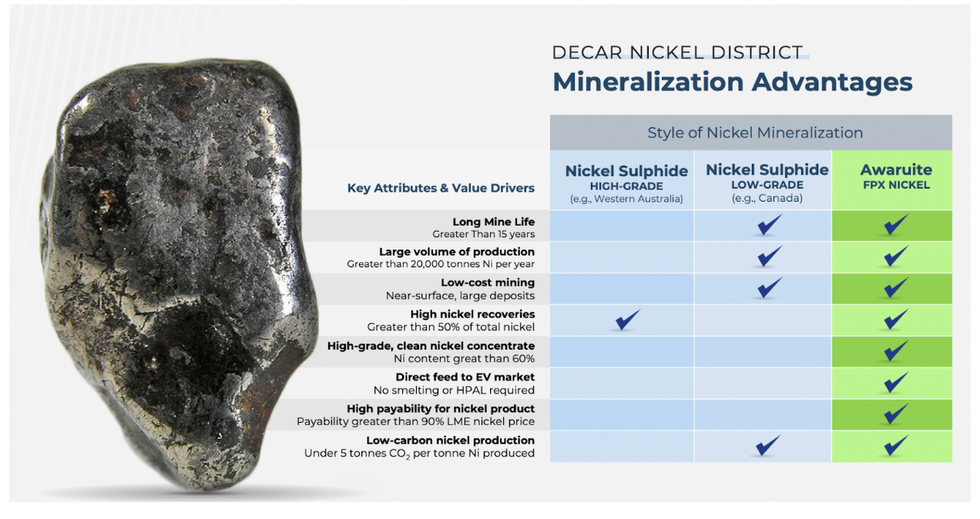
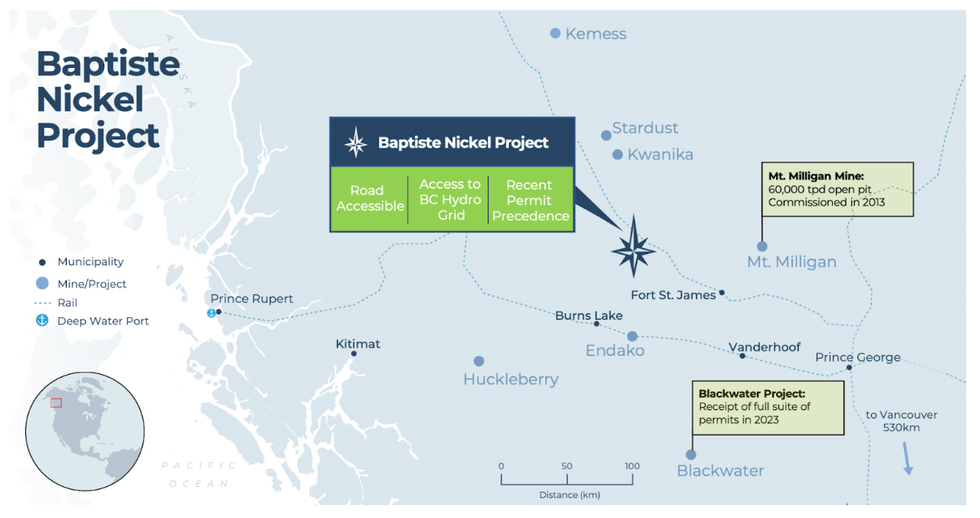
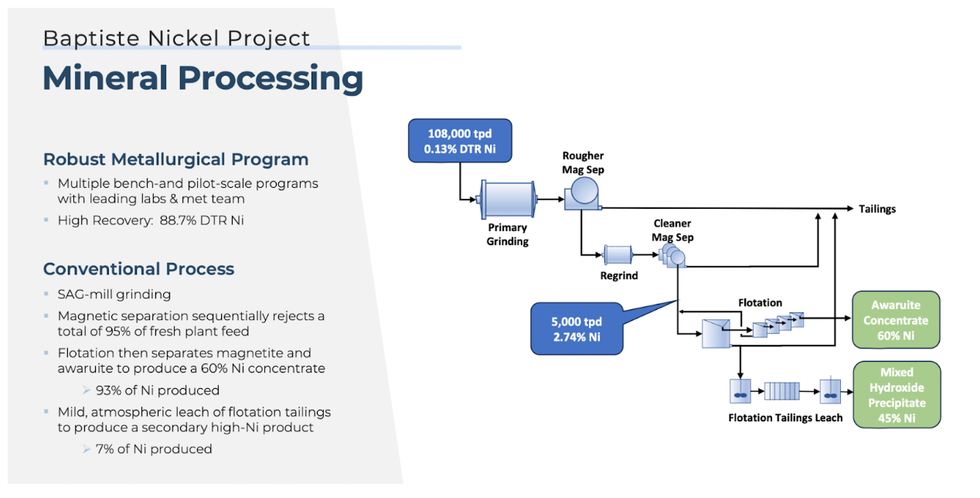
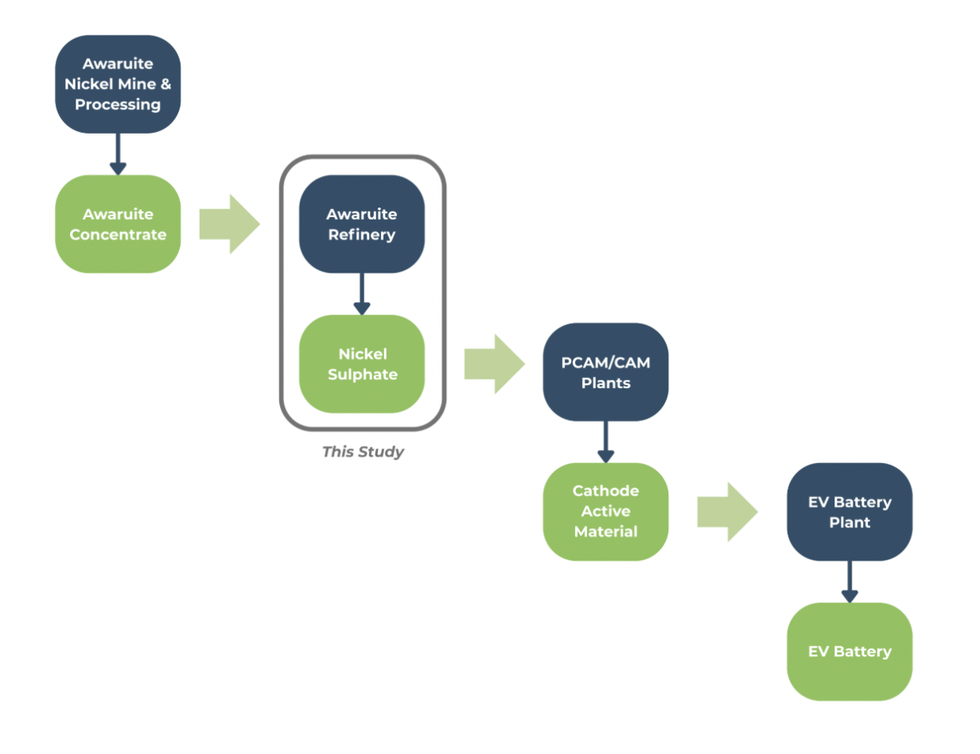
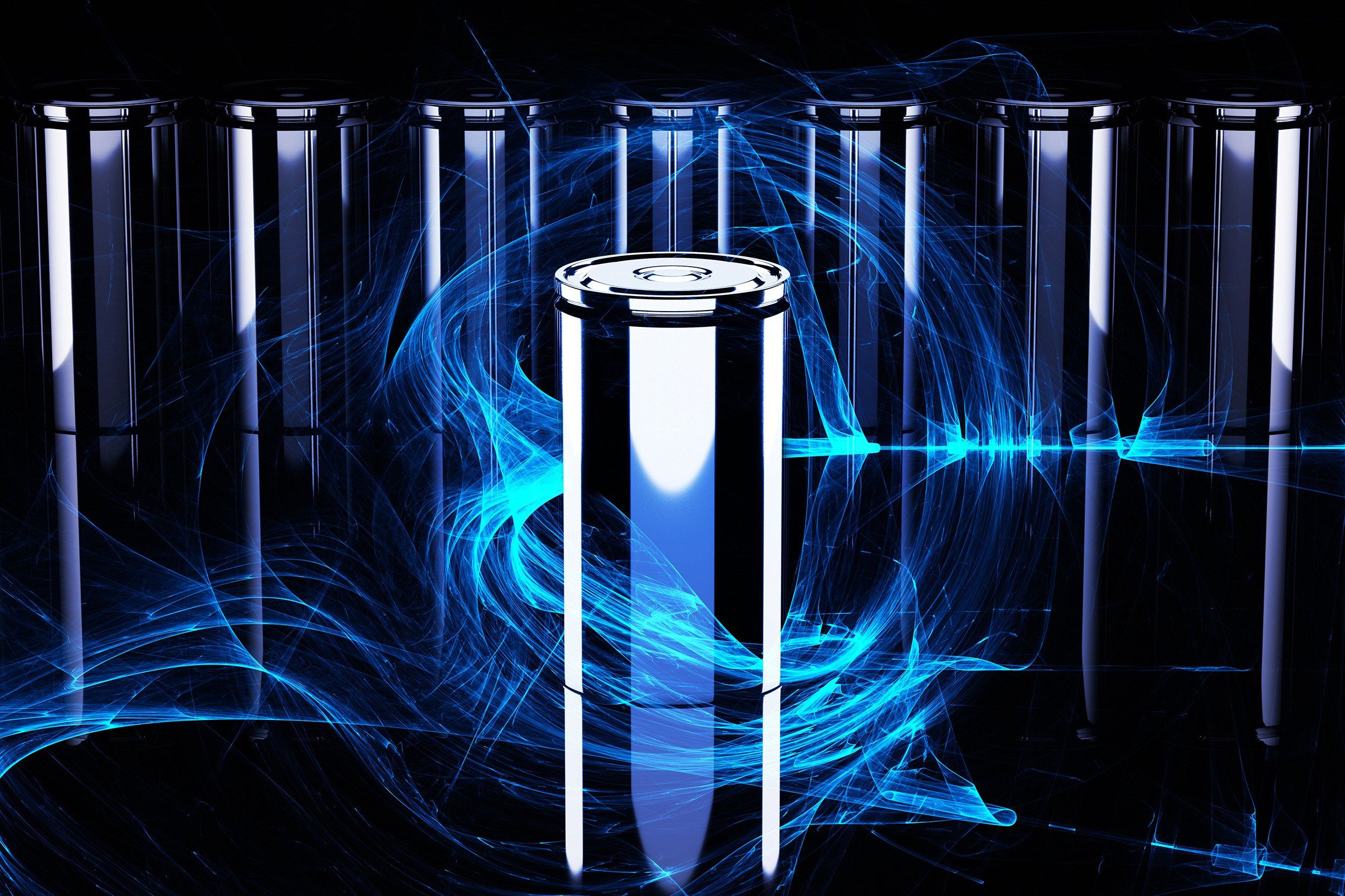





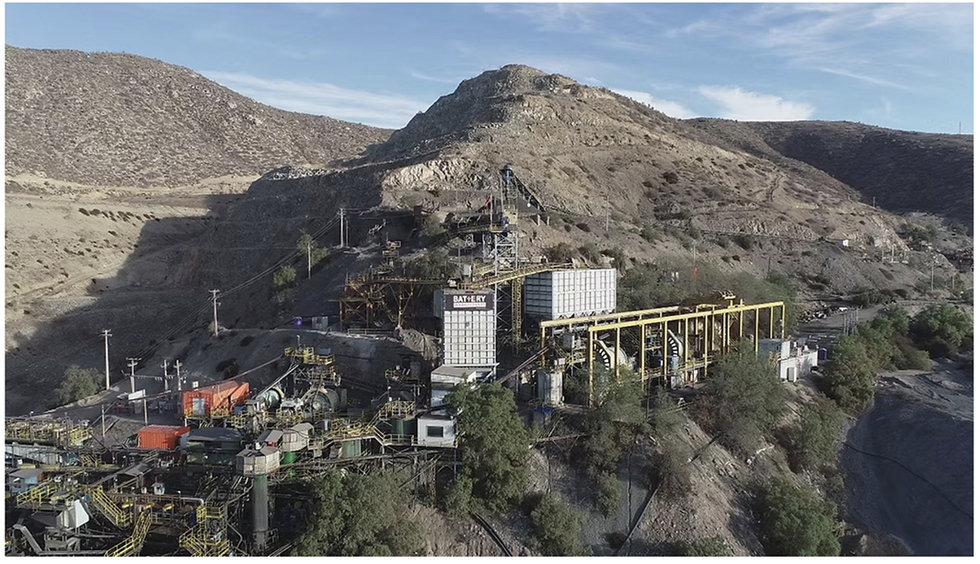 The Punitaqui Mining Complex includes the copper processing plant that is currently permitted for 100,000 tonnes per month. (Source: Battery Mineral Resources Corp.)
The Punitaqui Mining Complex includes the copper processing plant that is currently permitted for 100,000 tonnes per month. (Source: Battery Mineral Resources Corp.)